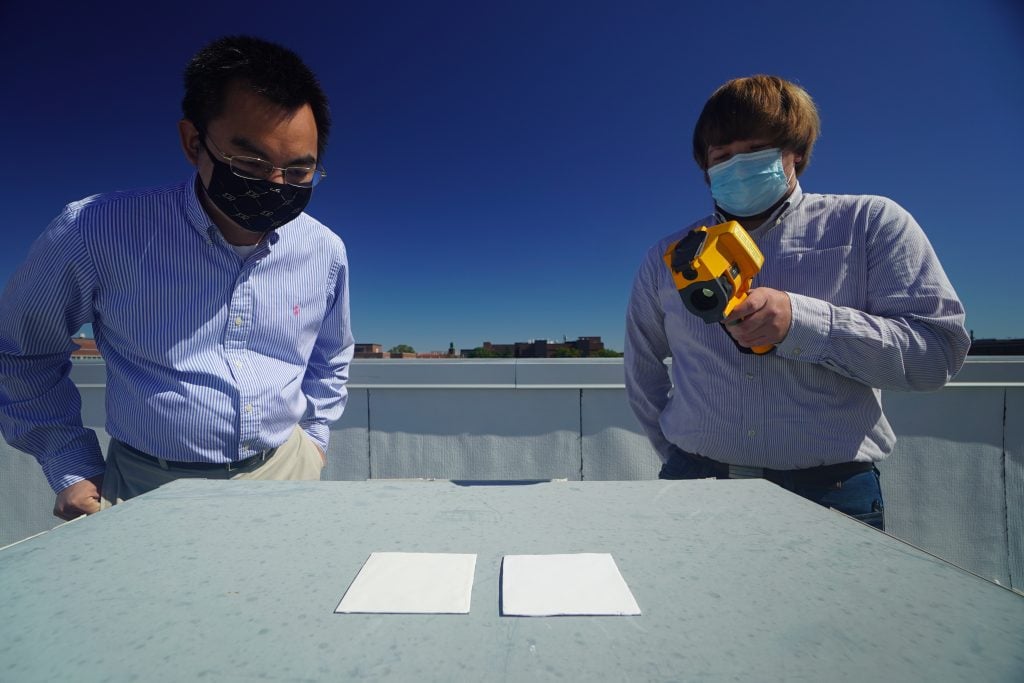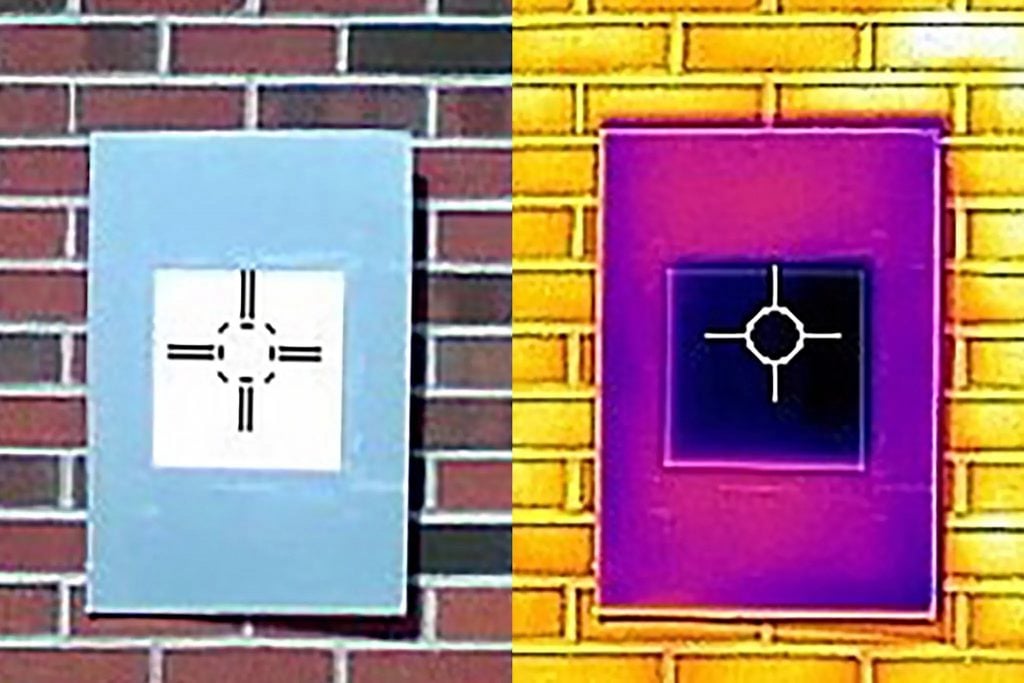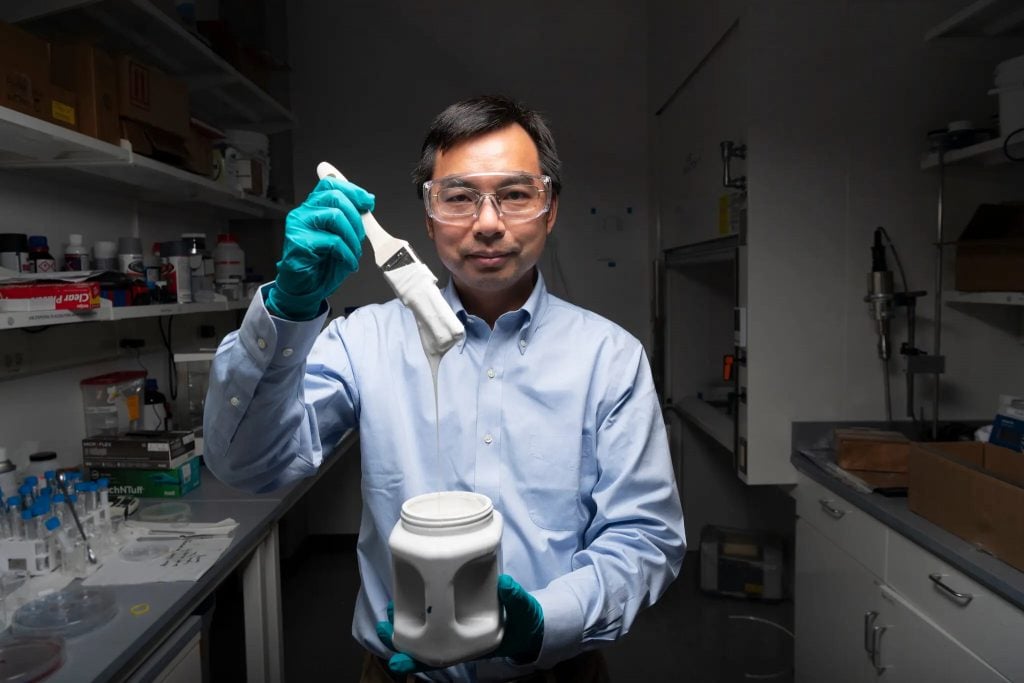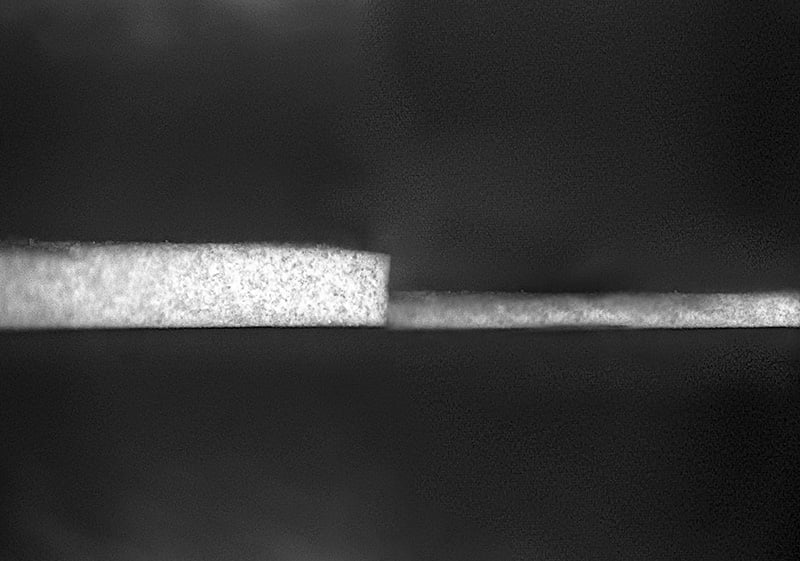In 2020, scientists from Purdue University developed a new super white acrylic paint which reflects 95.5% of sunlight. They’ve since made it even whiter, with a new formula that increased sunlight reflectance to 98.1%, setting the whitest paint record with Guinness World Records.
“We weren’t really trying to develop the whitest paint in the world,” said Xiulin Ruan, a mechanical engineering professor at Purdue who oversaw the research. New York Times. “We wanted to help fight climate change, and now it’s more of a crisis, and it’s getting worse. We wanted to see if it was possible to help save energy while cooling the Earth.
With the naked eye, it may not be obvious that you are looking at the whitest white. Because the paint scatters sunlight by reflecting it, there is no blinding effect. But while ultra-white may resemble the shades of paint you might buy at Home Depot, the newly developed paint is far more effective as a cooling tool than its more light-absorbing counterparts.
What does this mean in practice? Purdue’s ultra-white paint keeps surfaces cool to the touch, even in searing heat. Compared to mid-afternoon air temperature, a surface painted with the whitest white can be eight degrees Fahrenheit colder. At night, the difference is even more pronounced, up to 19 degrees.

Purdue researchers Xiulin Ruan (left) and Joseph Peoples compare the cooling performance of white paint samples on a roof. Photo by Jared Pike/Purdue University.
Painting buildings the whitest white could help offset the urban heat island effect, caused by the fact that most man-made buildings absorb more heat than natural landscapes, driving up temperatures.
The Purdue team has created its first ultra-white paint with calcium carbonate particles. The new version, the result of six years of research testing more than 100 different materials, is made with barium sulphate. (vantablackTHE the vaunted “blackest black” which absorbs 99.965% of light, is made from carbon nanotubes, just like an even blacker black developed by MIT scientists with the artist Diemut Strebe captures 99.995% of light.)
“We found that by using barium sulfate, you can theoretically make things really, really reflective, which means they’re really, really white,” said Xiangyu Li, who was a student in Ruan’s lab. statementnoting that a higher concentration of barium sulfate particles increases reflectivity, but that adding too much makes the paint prone to cracking.

A sample of ultra-white paint shown in infrared light. The dark purple square where the paint was applied is cooler than room temperature. Photo by Joseph Peoples courtesy of Purdue University.
White paint has long been used in hot climates on rooftops and building exteriors to try to keep homes cool, but since traditional paints only reflect 80-90% of sunlight, the heat continues to build.
With this whitest white, it’s almost as if Ruan has created an air conditioner that runs on zero energy and without the inconvenience of emitting heat outside even when the air conditioning is cooling the interiors. The air conditioning needs of a building coated with barium sulphate paint are expected to decrease by up to 40%.
Although the whitest white paint is an effective reflector, it would take a lot to have a noticeable impact on Earth’s temperature.

Xiulin Ruan, professor of mechanical engineering at Purdue University, with the whitest white paint. Photo by John Underwood, courtesy of Purdue University.
In 2019, a study in the journal Joule found that to keep global temperatures from rising, one would need to cover one to two percent of the Earth’s surface with a reflective material like the whitest white paint. It is a little more than half the area of the Sahara Desert.
Purdue developed the whitest white for use on roofs, but interest in the paint was widespread.
“I’ve been contacted by everyone from spacecraft manufacturers to architects to companies that make clothes and shoes,” Ruan said in a statement. statement. “They mainly had two questions: where can I buy it and can you make it thinner?”

The whitest paint in the world previously required a layer 0.4 millimeters thick to achieve sub-ambient radiation cooling. A new, thinner and lighter formulation can work just as well at just 0.15 millimeters thick. Photo by Andrea Felicelli, courtesy of Purdue University.
In response, Ruan’s team tweaked the formula into a lighter version for cars.
A retail version of the whitest white won’t be available for at least a year. In the meantime, Ruan’s lab is working with an as-yet-unannounced paint manufacturing company to make it more durable and dirt-resistant, as well as developing other colors that use ultra-white as a base, also improving their reflective properties.
Follow Artnet News on Facebook:
Want to stay one step ahead of the art world? Subscribe to our newsletter to receive breaking news, revealing interviews and incisive reviews that move the conversation forward.
